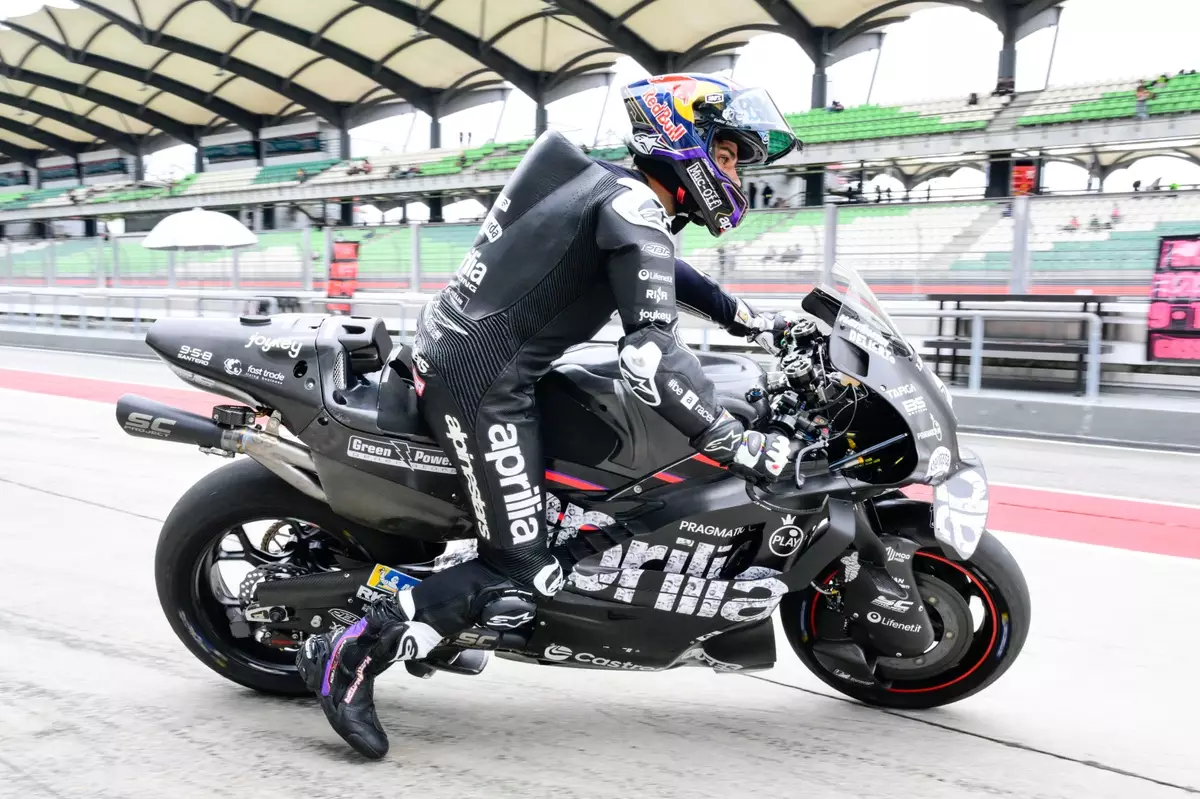The world of MotoGP was recently rocked by a harrowing incident during the pre-season tests at Sepang. Reigning champion Jorge Martin faced a horrifying highside that left him incapacitated, sparking an intense debate between his team, Aprilia, and tire manufacturer Michelin. This unfortunate accident not only raises troubling questions about rider safety but also ignites discussions about the accountability of tire performance in high-stakes motorsports.
On the opening day of the Sepang test, Martin, riding for Aprilia, encountered a powerful highside that sent him crashing to the ground, landing face-first and suffering significant injuries. While such spills are part of the adrenaline-fueled excitement of motorcycle racing, the implications of this particular crash could extend far beyond the racetrack.
In the days following the crash, Michelin made headlines by claiming that a drop in tire temperature led to Martin’s unfortunate accident. According to their analysis, sensors indicated that the temperature of the inside of Martin’s rear tire had dropped 15°C lower than anticipated. This supposedly benign explanation, however, has not been accepted without skepticism, particularly by Aprilia’s motorsport chief, Massimo Rivola.
Rivola quickly pushed back against Michelin’s assertion, characterizing it as a deflection of responsibility. „Our data shows that the bike had no problem and that Jorge did not make any mistakes,“ Rivola stated, highlighting a significant discrepancy between the two parties. His request for insight into the history of the tire compound, including its storage duration, further emphasized his doubts regarding Michelin’s accountability. Rivola’s insistence on a collective resolution suggests that this situation has implications that affect not just Martin, but all riders.
As the controversy unfolded, the immediate concern shifted to Martin’s health. After the crash, he sustained a single fracture on his right hand and multiple fractures on his left foot, necessitating a hospital visit and subsequent surgery. Reassuringly, the operation performed by Dr. Xavier Mir was successful, ushering in hopes of Martin’s swift recovery. Yet the nature of such injuries in the fast-paced world of MotoGP prompts an important question: how do we prioritize rider safety amidst the intense pressure of performance?
The medical complexities surrounding Martin’s situation are intricate. While the right hand injury required surgery, the fractures in his left foot did not. The prognosis suggested a start to functional recovery in due time, but the machinations of an athlete’s rehabilitation are fraught with uncertainty, particularly in an industry where split-second decisions can render career-defining consequences.
Within the sport, calls for enhanced transparency and collaboration among teams were amplified by Rivola’s statements. He proposed a meeting between Michelin and various teams to create an environment where safety can be prioritized. Given the increasing number of injuries across circuits, such a dialogue does not merely benefit Aprilia; it serves as a critical necessity for the entire MotoGP community.
The notion that tire performance and temperature can influence racing outcomes is not new, but the incident with Martin places those factors directly in the spotlight. It raises essential questions about the protocols in place for tire sourcing, storage, and overall safety standards. It’s not just about who to blame; it’s about fostering a collective responsibility that ensures the well-being of riders and the integrity of the sport.
As the dust settles from this latest drama, keen eyes are focused on future pre-season tests and the ongoing dialogue around safety regulations in MotoGP. The case of Jorge Martin serves as both a cautionary tale and an opportunity for improvement within the sport. As these discussions unfold, the focus must remain on ensuring that no rider’s career is jeopardized due to factors outside their control, including tire performance.
The MotoGP community must engage in an earnest discourse around the incident to ensure that every rider competes in the safest environment possible, underscoring that in the high-stakes world of motorsport, the stakes extend far beyond the podium.


Napsat komentář